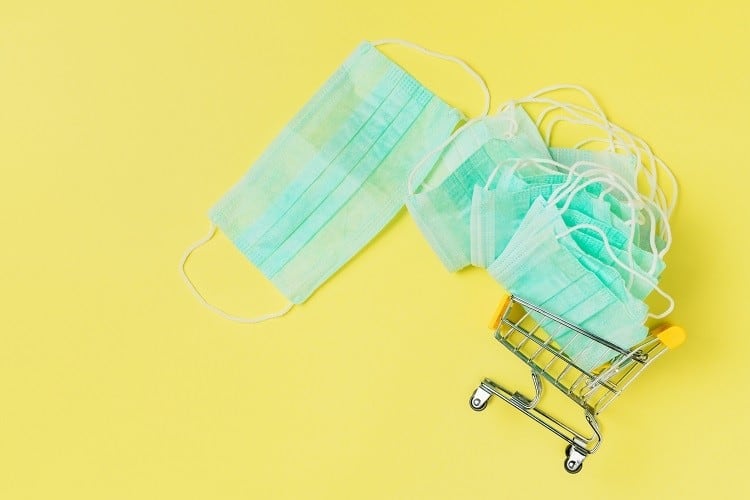This was according to the recently launched Kantar Asia Brand Footprint 2020 ranking report, which saw F&B brands dominate the Top Ten Most Chosen Brands listings for all the countries covered: China, Indonesia, Korea, Malaysia, Philippines, Taiwan, Thailand, and Vietnam.
According to the report, ‘big brands are winning’ across Asia based on growth rates and consumer choice, with just about all major brands being chosen by consumers at higher rates than average category growth rates.
Deeper analysis of the numbers saw food, beverage and dairy brands take up all 10 of the Top Ten lists in Malaysia and Korea, nine in Taiwan and Vietnam, eight in China and Thailand, and six in Indonesia and Philippines.
Rankings were based on Consumer Reach Points (CRPs), which were calculated based on population, penetration (percentage of households buying the brand) and consumer choice (interactions with brand across categories). Kantar tracked the consumer purchases across five categories: Beverages, Food, Dairy, Beauty and Personal Care, and Homecare.
Ten out of ten – Markets where F&B brands most chosen
Both Malaysia and Korea saw their Top Ten brands listings completely overtaken by F&B firms, an interesting finding especially in Korea where personal care and beauty brands have traditionally had a strong foothold in the market.
In Malaysia, three of the top 10 spots were taken by Nestle or its brands: Maggi came in at the top spot with 44 million CRPs, Milo at second spot with 33 million and Nestle at eighth spot with 15 million.
The other top spots also all went to household F&B names comprising dairy brands Marigold (third, 21 million CRPs) and Dutch Lady (fourth, 21 million), sauce/spice brands Adabi (fifth, 20 million) and Babas (seventh, 15 million), processed food brand Ayam Brand (sixth, 19 million), biscuit brand Munchy’s (ninth, 15 million) and beverage brand F&N (10th, 14 million).
“[In Malaysia], shoppers have downgraded to cheaper options, especially in dairy, which resulted in a negative impact on consumer spending, [and] with the major impact of COVID-19, the growth will be even more challenging for FMCG categories [such as food] moving forward,” said the report authors.
“Our recommendation [for this market] would be to focus on the right retail channels, strengthen key value propositions and media channels, and concentrate on ensuring repeat purchases and retaining shoppers, [especially given] a continued declining trend of consumer sentiment index after the general election in 2018.”
In Korea, dairy and ramen brands led with three dairy brands (Seoul Milk at 2nd place, Masinnen Milk at 4th place, and Will at 7th place) and two dedicated ramen brands (Ottogi ramen at 9th place, Jinramen at 10th place) making up half of the Top Ten rankings.
Food-based conglomerates also took top spots, such as Ottogi’s wider food manufacturing business at first place with a whopping 92.5 million CRPs, Dongwon at 3rd spot (71.9 million), and CJ Cheiljedang with its brands Beksul at 6th spot (62.6 million) and Bibigo at 8th spot (54.7 million).
In the South Korean market, e-commerce and digitalisation has emerged as a topmost priority especially post-COVID-19.
“Unlike the typical elderly in the past, Korea now has many ‘Active Seniors’ who spare no investment or consumption on themselves, especially in the online market,” said the report authors.
“Even seniors in their 60s and older use online shopping platforms Coupang and SSG via mobile, and the hurdles of digital consumption activities are collapsing fast.”
One possible reason for food brands having gained an edge over beauty brands is COVID-19 – people need to eat, but not necessarily make-up when staying home.
“The colour cosmetics market is expected to slow down [this year], as people don’t go out much due to COVID-19,” said the report.
“Prestige brands’ sales will be the most negatively impacted. [These traditionally] have a high proportion of offline customer contact points compared to ‘masstige’ brands, and now as they begin shifting to online, competition is expected to intensify.”
Dairy first for Vietnam
In Vietnam, the Top Ten brands were largely local ones, and the top three were all F&B – Dairy firm Vinamilk took the top spot with 48 million CRPs, followed by noodle company Hao Hao at 18 million and sauce brand Nam Ngu at 13 million.
This trend of choosing local was apparent in both urban and rural areas, with only a few exceptions like Milo and Ajinomoto (5th and 6th place for urban areas) and Unilever for non-food applications.
Notably, in previous years no non-local brand has managed to come close to, much less surpass, Vinamilk’s hold on consumer choice when it comes to dairy and dairy products but this year Kantar highlighted Yakult as a potential upcoming contender.
“Yakult has jumped three spots in the Vietnamese urban cities ranking, entering the top 10 most chosen brands among dairy and dairy substitutes for the first time,” they said.
“The brand obtained three million CRPs this year, [which can likely be attributed] to the heightened health and convenience trends among Vietnamese consumers in recent years [calling for] drinking yoghurt, as well as its strong investment in social media and nutritional benefits branding e.g. the ‘Yakult Lady’ model.”
Another potential factor for this growth is the rising demand for nutrition and immune-boosting products in the wake of COVID-19.
“Even before the virus outbreak occurred, health and wellness was a prominent trend in Asian consumer behaviour [and now] shoppers are purchasing items that they know can help boost their immune system during COVID-19 [so] products like milk and immune-boosting drinks have been in-demand commodities,” said the authors.
China was another market where local brands populated the Top Ten list, with dairy firms Yili (1st) and Mengniu (2nd) both receiving over one billion CRPs, though foreign brand penetration appears much less likely for this market given that only two international brands were found within the top 50 rising brands.
These were home cleaning brand Omo and Pepsi, with a strategy to ‘attract more buyers in lower tiers’, and even the latter has just had to take a recent step back earlier this year after one of its processing factories in Beijing was shut down due to COVID-19 concerns.
Key trends to attract buyers
The report also highlighted several key consumer trends to note in the Asian region, which were health, value for money, convenience, diversification and digitalisation.
“[For the F&B sector in Asia], the top growing categories for Health include those that offer shoppers natural ingredients and additional nutrients, [and for] convenience these are instant noodles and rice, bottled water, snacks, and canned foods,” said the authors.
“[Food and beverage brands] can look at strategies like stretch across different categories, targeting new buyers, and promoting a wider range of occasions of consumption.
“The ultimate lever for brand growth is recognising new consumer needs and then establishing a new category, for example Hong Kong-based Vita which [banked on] low sugar as an emerging trend in the market and decided to promote sugar-free products to reach its target audience, gaining it an impressive CRP growth rate of 13.4%.”





